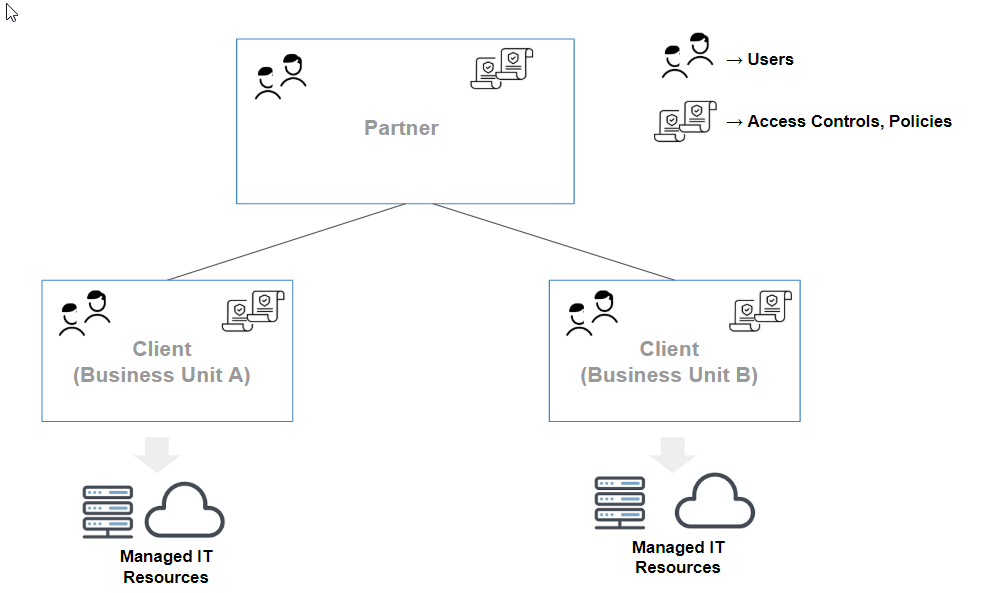Tenancy
Tenancy refers to the ability to create independent domains of management - tenants. Each tenant, is a logical container for a set of managed resources.
Partitioning your environment into multiple tenants has the following use cases:
- IT operations team in an enterprise.
- Service delivery team in a managed service provider.
IT operations team in an enterprise
You are part of an IT operations team within an enterprise, responsible for managing IT resources that belong to multiple business units.
Each business unit has a different levels of service the expect from you. For example, business unit A may want all alerts from their resource to be forwarded to local IT staff within department.
While business unit B may want you to triage all alerts and only notify their local IT staff if needed.
It is helpful to partition IT resources into multiple tenants - where IT resources of each business unit is managed as a separate tenant. You can apply different management processes to each business unit.
Service delivery team in a managed service provider
You are part of a service delivery team within a managed service provider. You are managing multiple customers, each with separate service level requirements and management contracts.
It is helpful to partition IT resources into multiple tenants - where IT resources are managed for each customer as a separate tenant. You can apply different management processes to each customer and measure and report on service levels delivered for each customer.
Tenancy model
OpsRamp tenancy model consists of two core constructs - Partner and Client. Most features function within the scope of a partner or client, allowing to apply different management regimes to different clients.
